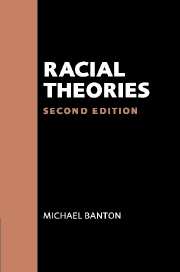4 - Race as subspecies
Published online by Cambridge University Press: 09 November 2009
Summary
In the 1850s two views of human diversity were in contention. The first was associated with a conception of race as lineage and with the ethnological approach. It assumed that all humans had descended from a single ancestral pair and had since diversified, so that it offered a theory of change in which a major influence was exercised in some as yet mysterious way that seemed to be tied to environmental circumstances. The second view was associated with a conception of race as type and with the anthropological approach. It assumed that racial differences had existed from some very early period of prehistory when different stocks had been created either by God or by some natural catastrophe. It offered a theory of continuity based upon the evidence of inheritance. The achievement of Charles Darwin (1809–82) was to subsume these two theories within a new synthesis which explained both change and continuity.
Darwin's method
Darwin utilised a concept of race somewhat obliquely in the fourth edition (1866) of his book On the Origin of Natural Selection or the Preservation of Favoured Races in the Struggle for Life (1859). He quoted the reference in one of A. R. Wallace's papers about butterflies in Malaysia, to ‘geographical races, or subspecies’ as ‘local forms completely fixed and isolated’. Because they were isolated they did not inter-breed, and so ‘there is no possible test but individual opinion to determine which of them shall be considered as species and which as varieties’.
- Type
- Chapter
- Information
- Racial Theories , pp. 81 - 116Publisher: Cambridge University PressPrint publication year: 1998



